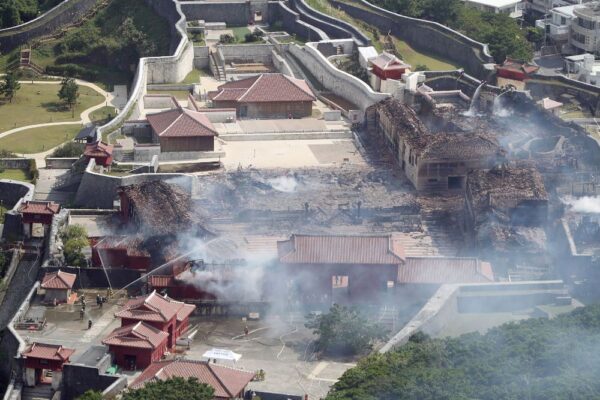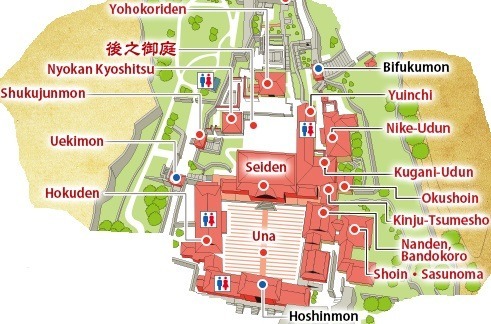Five years after the devastating fire in 2019, Shurijo Castle has undergone a remarkable restoration. The efforts have focused on rebuilding the damaged structures and preserving the cultural heritage of this iconic site. With an expected completion date in 2026, the restoration project aims to return the castle to its former glory while ensuring it remains a vibrant part of Okinawa’s cultural landscape.
History of Shurijo Castle
Shurijo Castle was built around the 14th century and became the center of the Ryukyu Kingdom. The castle displays a mix of Chinese and Japanese design influences and was the largest wooden building in the kingdom. It served as the royal palace where the king and his family lived and housed the government that ruled the kingdom. Additionally, it was the main religious site for the kingdom, where priestesses led ceremonies and rituals that connected the entire Ryukyu region.
After the Ryukyu Kingdom was annexed and became Okinawa Prefecture in 1879, the castle was used by the Japanese military, and as a location for several schools. During World War II, it was destroyed in the Battle of Okinawa in 1945. After the war, the site became part of the University of the Ryukyus.
In 1992, after the university moved to a different location, the castle was restored as Shurijo Castle Park. The restored castle reflects its 18th-century style and remains a cultural symbol of Okinawa.
The Fire in 2019

On October 31, 2019, a fire at Shurijo Castle destroyed nine buildings, including the important Seiden (Main Hall). Here is a list of those nine facilities:

Main buildings that were completely destroyed:
- Seiden (Main Hall)
- Hokuden (North Hall)
- Nanden (South Hall)
- Bandokoro (Reception Office)
The fire also affected surrounding buildings and areas, including:
- Shoin-Sasunoma
- Kinju-Tsumesho
- Okushoin
- Kugani-Udun
- Nike-Udun
- Yuinchi
- Part of Hoshinmon
These facilities were significant parts of Shurijo Castle’s architectural and cultural heritage, and their loss was a major cultural blow.
Shurijo Restoration, Five Years Later
Daily Use of the Buildings and Areas
Seiden (Main Hall)
Seiden, known as the “Main Hall” or State Palace, is located to the east of the Una, facing west towards China. This building houses the throne room, royal living quarters, and ceremonial areas.
Hokuden (North Hall)
Hokuden, or the “North Hall,” is situated to the north of the Una. It originally served as a judicial and administrative center where Chinese envoys (Sapposhi) were received. Today, it functions as a museum and gift shop. Originally named Nishi-no-udun or Giseiden, it was built between 1506 and 1521.
Nanden (South Hall)
Nanden, also called the “South Hall,” used to be an entertainment area for Satsuma envoys. It currently serves as an exhibition space.
Bandokoro (Reception Office)
Bandokoro, located south of the Una and adjacent to Nanden, was originally the main reception area. Today, it houses a museum. Both Bandokoro and Nanden were built between 1621 and 1627.
Shoin (Study Hall)
Shoin, or the “Study Hall,” is located south of Nanden. This space was used for the study and office of the king and served as a place where Chinese and Satsuma officials were entertained during their visits.
Kinju-Tsumesho
Kinju-Tsumesho is a work area for high-ranking officials, such as the Kinju-gashira, Kinju-yaku, and Hisa. It currently serves as a passageway between Nanden and Seiden.
Okushoin (Royal Study Hall)
Okushoin served as the Royal Study Hall, primarily used by the Ryukyu Kingdom’s royal family, including the king and his officials. This hall was designed for studying, conducting meetings, and discussing important state matters.
Kugani-Udun
Kugani-Udun is a private area for the king, his wife, and mother, located south of Seiden. It dates back to at least 1671 and was rebuilt by 1715. Kugani-Udun includes inner rooms known as Suzuhiki and Ochane-zume.
Nike-Udun
Nike-Udun, or the “Two-Story Hall,” served as a sitting room for the king and is linked to Seiden. It was built in 1765 and later extended south in 1874.
Yuinchi
Yuinchi is the royal food preparation area connected to Kugani-Udun. It has been in use since at least 1715 and employed staff, including the chef (Hocho) and female servants (Agama).
Hoshinmon
Hoshinmon, meaning “gate to respect the gods,” is the last gate on the path leading to the Una at Shurijo Seiden. The roof on the north side was damaged in the fire but has since been repaired.
Cheers;
Gert


The fire at Shuri Castle was a devastating loss for Okinawa’s cultural heritage. Its restoration highlights the importance of preserving history. I look forward to seeing the rebuilt castle.